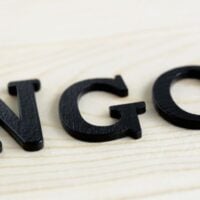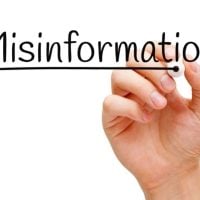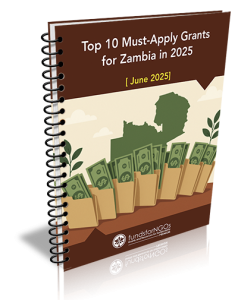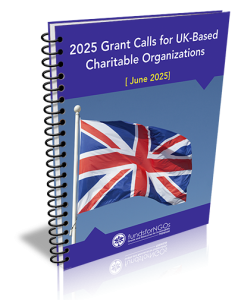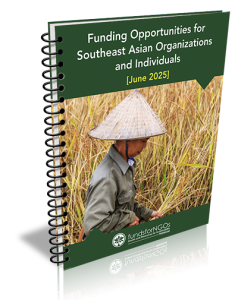Grant proposal writing is a critical skill for professionals in the nonprofit sector, as it serves as the bridge between an organization’s mission and the funding necessary to achieve it. In an increasingly competitive landscape, where numerous organizations vie for limited resources, the ability to craft a compelling grant proposal can make all the difference. A well-written proposal not only articulates the needs of the community but also demonstrates how the proposed project aligns with the funder’s priorities.
This alignment is essential, as it establishes a connection that can lead to successful funding outcomes. Understanding the nuances of grant proposal writing is essential for NGO professionals. It involves not just a clear presentation of ideas but also a strategic approach to communicating those ideas effectively.
The process requires thorough research, meticulous planning, and a deep understanding of both the organization’s goals and the funder’s expectations. As we delve into the do’s and don’ts of grant proposal writing, along with actionable tips and best practices, we will equip you with the tools necessary to enhance your grant writing skills and increase your chances of securing funding.
Do’s of Grant Proposal Writing
Researching Potential Funders
First and foremost, it is crucial to thoroughly research potential funders. Understanding their mission, funding priorities, and past projects can provide invaluable insights into how to tailor your proposal. For instance, if a foundation has a history of supporting educational initiatives, framing your project within that context can create a compelling narrative that resonates with their objectives.
Defining Project Goals and Objectives
Another important step is to clearly define your project’s goals and objectives. A well-articulated project plan not only outlines what you intend to achieve but also demonstrates your organization’s capacity to deliver results. Use SMART criteria—Specific, Measurable, Achievable, Relevant, and Time-bound—to frame your objectives. This clarity will help funders understand the impact of their investment and how success will be measured.
Creating a Strong Budget Proposal
Additionally, including a detailed budget that aligns with your project goals can further strengthen your proposal by showcasing financial responsibility and transparency.
Don’ts of Grant Proposal Writing
While there are many strategies to embrace in grant proposal writing, there are also pitfalls to avoid. One major don’t is to overlook the importance of following guidelines provided by the funder. Each grant application typically comes with specific instructions regarding format, length, and required documentation.
Ignoring these guidelines can lead to immediate disqualification or a negative impression of your organization’s professionalism. Always ensure that you adhere strictly to the requirements outlined in the request for proposals (RFP). Another common mistake is to use jargon or overly complex language in your proposal.
While it may be tempting to showcase your expertise through technical terms, this can alienate reviewers who may not be familiar with your field. Instead, aim for clarity and simplicity in your writing. Use straightforward language that conveys your message effectively without unnecessary complexity.
Remember, the goal is to communicate your project’s significance and feasibility in a way that is accessible to all potential reviewers.
Tips for Writing a Successful Grant Proposal
To elevate your grant proposal from good to great, consider incorporating storytelling elements into your writing. Funders are often moved by personal stories that illustrate the impact of their support on real lives. By weaving narratives that highlight individual experiences or community challenges, you can create an emotional connection that resonates with reviewers.
For example, if your organization works with at-risk youth, sharing a success story about a specific individual can humanize your proposal and demonstrate the tangible outcomes of your work. Additionally, engaging visuals can enhance your proposal’s appeal. Charts, graphs, and images can effectively convey data and illustrate your project’s potential impact.
Visual aids not only break up text but also make complex information more digestible. When presenting statistics or projected outcomes, consider using infographics that summarize key points at a glance. This approach not only captures attention but also reinforces your message in a memorable way.
Common Mistakes to Avoid in Grant Proposal Writing
Even seasoned grant writers can fall prey to common mistakes that undermine their proposals. One frequent error is failing to proofread thoroughly before submission. Typos, grammatical errors, and inconsistencies can detract from the professionalism of your proposal and may lead reviewers to question your attention to detail.
Always allocate time for multiple rounds of editing and consider having someone outside your organization review the document for clarity and coherence. Another mistake is neglecting to articulate a clear evaluation plan. Funders want to know how you will measure success and assess the impact of their investment.
Failing to include a robust evaluation strategy can raise red flags about your organization’s ability to deliver results. Be sure to outline specific metrics you will use to evaluate progress and how you plan to report these findings back to the funder.
Best Practices for Grant Proposal Writing
Adopting best practices in grant proposal writing can significantly enhance your effectiveness as an NGO professional. One such practice is building relationships with funders before submitting proposals. Engaging with potential funders through networking events or informational meetings can provide insights into their priorities and preferences.
This proactive approach not only helps you tailor your proposals more effectively but also establishes rapport that may benefit future applications. Moreover, consider creating a grant calendar that tracks deadlines for various funding opportunities. This organizational tool can help you manage multiple proposals simultaneously while ensuring that you allocate sufficient time for research, writing, and revisions.
By planning ahead, you can avoid last-minute scrambles and produce higher-quality proposals that reflect careful thought and preparation.
Key Components of a Strong Grant Proposal
A strong grant proposal typically includes several key components that work together to create a cohesive narrative. The executive summary serves as an overview of your project, summarizing its purpose, goals, and anticipated outcomes in a concise manner. This section should grab the reader’s attention and encourage them to delve deeper into the details of your proposal.
Following the executive summary, a needs statement articulates the specific problem or challenge your project aims to address. This section should be backed by data and research that highlight the urgency of the issue at hand. Additionally, outlining a clear methodology detailing how you plan to implement the project is essential for demonstrating feasibility.
Finally, including a sustainability plan that addresses how you will continue the project beyond the funding period can reassure funders of its long-term viability.
Conclusion and Final Thoughts on Grant Proposal Writing
In conclusion, mastering grant proposal writing is an invaluable skill for NGO professionals seeking funding for their initiatives. By understanding the do’s and don’ts of proposal writing, implementing actionable tips, avoiding common mistakes, and adhering to best practices, you can significantly improve your chances of securing grants. Remember that each proposal is an opportunity not just to request funding but also to tell your organization’s story and showcase its impact on the community.
As you embark on this journey, keep in mind that grant writing is both an art and a science—requiring creativity in storytelling while adhering to structured guidelines. With practice and persistence, you will refine your skills over time, leading to more successful funding outcomes for your organization’s vital work. Embrace each opportunity as a chance to learn and grow in this essential aspect of nonprofit management, ultimately contributing to positive change in the communities you serve.


